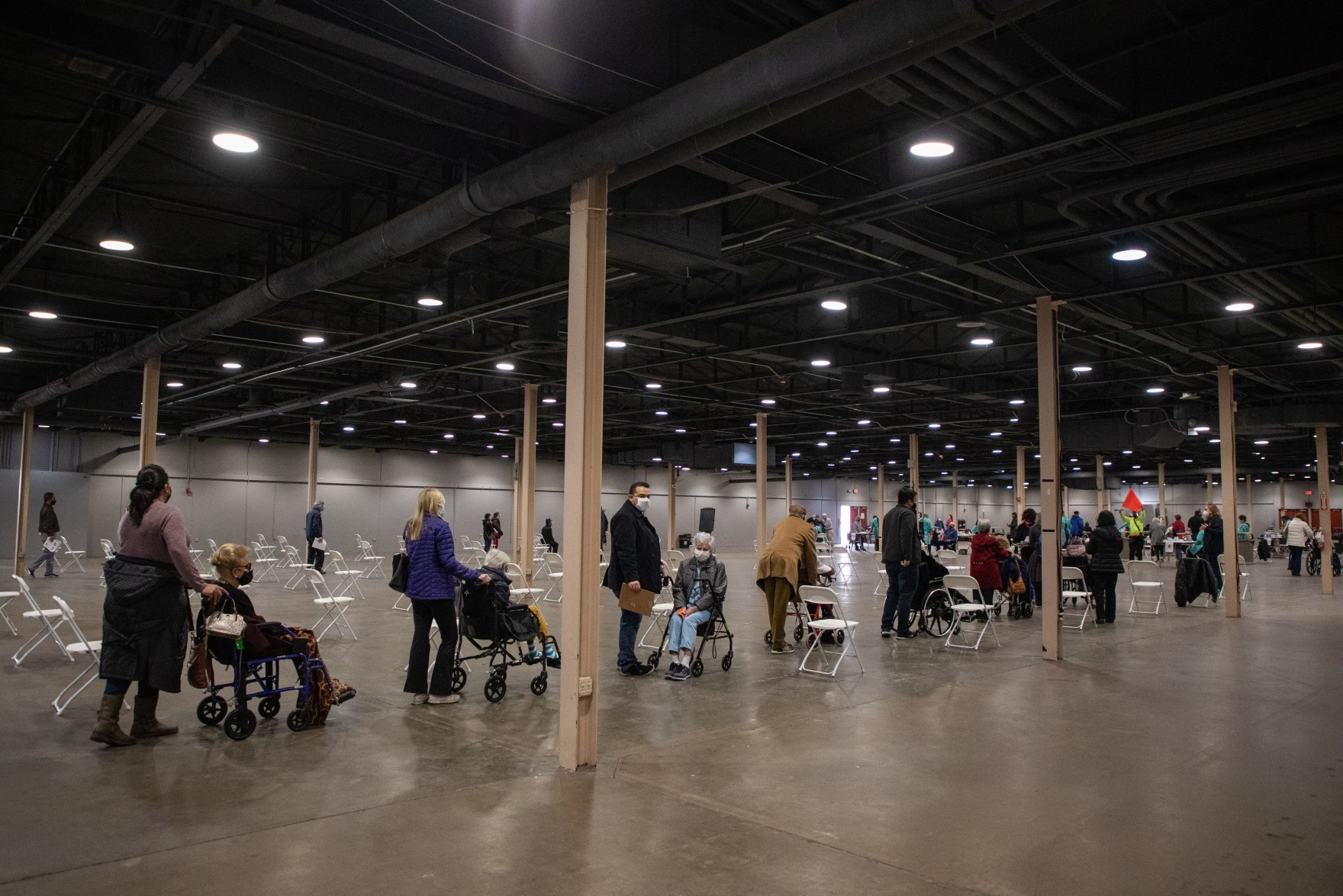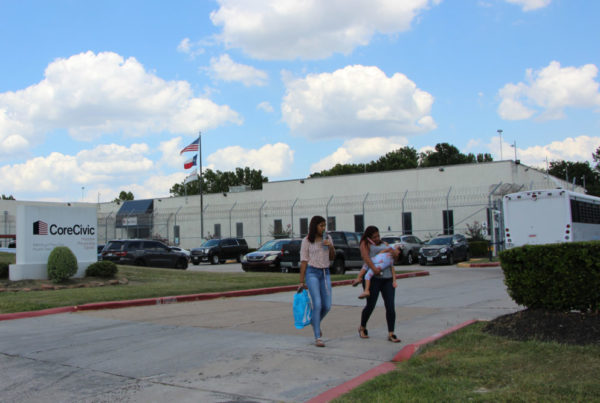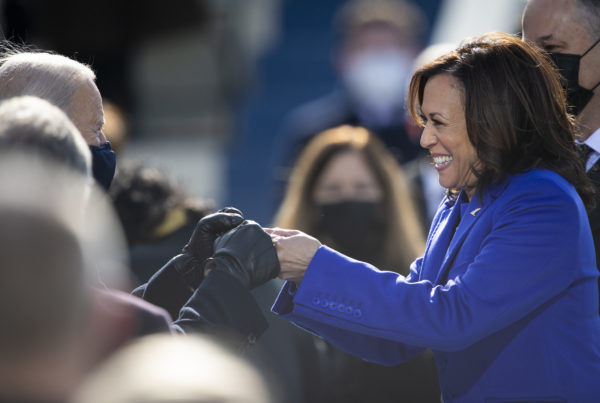Texas’ rollout of the COVID-19 vaccine has been full of challenges. While widespread vaccinations are our best way out of the pandemic, distribution of doses has been inconsistent, and some areas are struggling more than others to get shots into people’s arms.
Texas Standard spoke with two reporters from different corners of the state about rollouts in their areas: Michael Rodriguez is editor of the McAllen Monitor; Nic Garcia is a reporter for The Dallas Morning News.
Both reporters told the Standard that the biggest hurdle by far is that there are simply not enough vaccine doses to go around.
In the Rio Grande Valley
Wait times have been especially long:
Rodriguez says people in Hidalgo and Cameron Counties were instructed by local officials to prepare for long waits at vaccination centers – to bring blankets, food and water to use while they wait. And sometimes those waits lasted 24, 36, even 48 hours.
“These are individuals who are obviously vulnerable. They have to be conscious of where the bathrooms are. They have to be conscious of the weather, [which] at the time was very cold,” he said.
Vaccine doses are “trickling in”:
Cameron County, with a population of over 420,000 people, is receiving about 5,000-6,000 doses per week, Rodriguez says. Hidalgo County, with almost 870,000 people, has gotten about 50,000-55,000 total doses since vaccines became available. Rodriguez says the dearth of doses has left people feeling discouraged.
“There is a high demand and there’s a lot of hope that hinges on this,” Rodriguez said. “And [there’s] the disappointment of waiting that long, preregistering and doing everything they have to do, feeling as though their lives depend on it, and then to be turned away because they reached capacity.”
What can be done?:
The state needs to allocate vaccine doses “commensurate” with counties’ population sizes. Hidalgo County, for example, is the seventh largest in the state in terms of population.
“I don’t want to suggest that optimism isn’t shared by the people. I just think that residents here are more along the lines of, ‘Show us don’t tell us,'” Rodriguez said.
In Dallas County
Confusion at vaccine “megasites”:
Garcia says while the sites were created to make it easier for people to access vaccinations, the process has still been confusing.
“There has been a lot of mixed messages over the first two weeks over who can get a shot, how to register for a shot. And it’s just left a lot of North Texans frustrated, especially the older populations who are most at need,” he said.
A disproportionate effect on communities of color:
The vaccine rollout has, once again, exposed long-standing racial inequities in Dallas County, Garcia says. That mimics similar problems elsewhere in the state. Communities with greater proportions of residents of color – who are also at greater risk from the virus – have had a harder time getting vaccinated.
There are not enough doses yet for Phase 1B:
Texas opened up vaccinations to this much larger group, which includes anyone over 65 years old, as well as high-risk individuals over the age of 16. Garcia says that makes millions more people eligible when the county, and the state, are already struggling to get the vaccine to frontline health-care workers and people living in long-term care facilities.
“That’s millions of people that we just do not have the shots for. And until we get a much clearer idea of how we’re going to prioritize these shots, it’s going to be hard to to get any sort of consistency, either regionally or across the state,” Garcia said.
Politics can wait:
Garcia says politics have complicated Dallas County’s vaccine rollout.
“There’s a lot of egos at play here in Dallas and lives are at stake. Politics can come later,” he said. “Everyone really needs to get on the same page and get on to a coordinated effort on how we’re going to make sure these shots are going to people in the most effective order to keep the virus at bay.”















